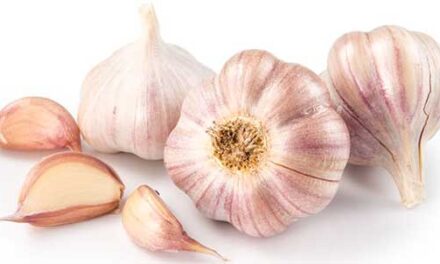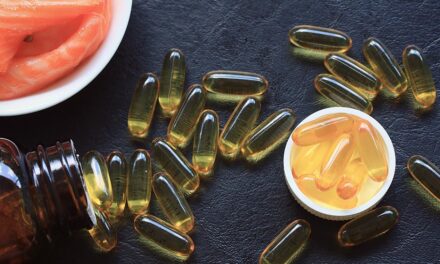The prostate is an important male gland that secretes a fluid found in semen.1 In addition, the urethra (the tube through which urine flows) runs through the prostate, so changes in prostate structure, such as prostate enlargement, can profoundly and negatively affect urinary function. The most common issue that impacts prostate health for most men is benign prostatic hyperplasia. A more serious, common issue is prostate cancer. This article will review these problems, and consider some key nutraceuticals that may help.
Benign prostatic hyperplasia (BPH)
Benign prostatic hyperplasia (BPH) is a common enlargement of the prostate gland as a man ages. Though the prostate continues to grow during most of a man’s life, the enlargement doesn’t usually cause symptoms before age 40, but more than half of men in their sixties, and as many as 90 percent in their seventies and eighties have some symptoms of BPH. These symptoms stem from obstruction of the urethra and gradual loss of bladder function, which results in incomplete emptying of the bladder. Imagine the prostate as a donut shaped gland, and as the prostate swells up and enlarges, the internal diameter of the donut hole gets smaller, squeezing the urethra. The symptoms of BPH vary, but the most common ones involve changes or problems with urination, such as:
- a hesitant, interrupted or weak stream
- urgency and leaking or dribbling
- more frequent urination, especially at night
The size of the prostate does not always determine how severe the obstruction or the symptoms will be. Some men with greatly enlarged glands have little obstruction and few symptoms while others, whose glands are less enlarged, have more blockage and greater problems.
Prostate cancer
Prostate cancer is the third most common cause of death from cancer in men of all ages and is the most common cause of death from cancer in men over age 75. Prostate cancer is rarely found in men younger than 40. Men who are at higher risk include those who are older than 60, have a family history of prostate cancer, abuse alcohol, eat a diet high in fat (especially animal fat), have been exposed to cadmium, and are African-American. The symptoms listed below can occur with prostate cancer, usually at a late stage (although they may also be caused by BPH):
- Delayed or slowed start of urinary stream
- Dribbling or leakage of urine, most often after urinating
- Slow urinary stream
- Straining when urinating, or not being able to empty out the bladder
- Blood in urine or semen
Nutraceuticals for prostate health
There are a several nutraceuticals with research that support their use in promoting healthy prostate function. Five of these include beta-sitosterol, zinc, selenium, vitamin D and boron.
Beta-sitosterol
Beta-sitosterol, a natural plant sterol commonly found in some foods, has shown in research to effectively treat symptoms of BPH. For example, in a 6-month, multi-center, double-blind, placebo-controlled trial published in the British Journal of Urology2 177 patients with BPH were treated using 130 mg beta-sitosterol daily, or placebo. Results showed significant (P < 0.01)a improvements over placebo in those treated with beta-sitosterol, as measured by the International Prostate Symptom Scoreb (IPSS) and the quality-of-life index. There were also significant improvements in peak urinary flow rate and bladder emptying. A similar 3-month study3 in a Japan using 180 mg of beta-sitosterol daily also found significant (p < 0.05) improvements in BPH symptoms.
In a 6-month, randomized, double-blind, placebo-controlled multi-center study in the Lancet,4 200 patients with BPH were treated with 60 mg beta-sitosterol daily or placebo. Results showed significant improvements in the modified Boyarsky score (a measurement of BPH symptoms) as well as a significant decrease in IPSS. Furthermore, there were improvements in peak urine flow bladder emptying, which remained unchanged in the placebo group (p < 0.01). In an 18-month follow-up study,5 38 patients of the patients who continued beta-sitosterol treatment had stable values for all outcome variables. Of the former placebo group, 27 patients who started beta-sitosterol after the double-blind trial improved to the same extent as the treated group for all outcome variables.
Perhaps most significantly, a review6 and a meta-analysis7 examined the results of several randomized, placebo-controlled, double-blind trials in which beta-sitosterol was used in treating BPH in 519 men. As with the aforementioned studies, these also demonstrated significant improvements in BPH symptoms. It should be noted that one of the studies8 reviewed in the meta-analysis found that beta-sitosterol decreased the number of times each night that men with BPH had to get up to urinate.
Zinc
Zinc plays important roles in the immune response, neurological function, and reproduction.9 This mineral’s importance to prostate health is easily demonstrated by the fact that the prostate has a higher concentration of zinc than any other organ of the body.10 Furthermore, there are higher concentrations of zinc in seminal fluid (much of which is secreted by the prostate) than in other body fluids.11 This means that each time a man ejaculates he loses some zinc which—needs to be replaced. In addition, zinc levels have been found to decrease in the prostate tissue and prostatic fluid in men with prostatic carcinoma.12,13
Selenium
Epidemiologic studies14 have shown that: 1) higher levels of the mineral selenium may slow prostate cancer tumor progression, 2) selenium seems to accumulate in the prostate, and 3) selenium protects against DNA damage and increases apoptosis (programmed cell death) in cancer cells.
Other research15 reported that selenium levels were significantly lower in those with prostate cancer. Furthermore, in a case-control study,16 181 men with advanced prostate cancer and 181 matched controls were examined. The results were that individuals whose average dietary intake of selenium was 159 mcg/day had a 65 percent lower risk of advanced prostate cancer compared to those with an average intake of 86 mcg/day. Other research17 has found that the risk of developing prostate cancer was 50 percent less in men with higher serum selenium levels compared to those with the lowest intake. Similarly, a case-control study18 found that men with the lowest selenium intake were four to five times more likely to develop prostate cancer than those with the highest selenium intake.
Vitamin D
Epidemiological studies19 show correlations between the risk factors for prostate cancer and conditions that can result in decreased vitamin D levels. Furthermore, the active metabolite of vitamin D inhibits the growth of human prostate cancer cells. Other research20 with prostate cells further support the idea that increasing vitamin D levels may be useful in preventing prostate cancer. In addition, a study21 of Finnish men found that low serum vitamin D levels were associated with earlier and more aggressive prostate cancer development.
Boron
Research22 has found that groundwater boron levels correlated with a decrease in prostate cancer incidence and mortality, and that a common form of boron in-vitro improves the anti-proliferative effectiveness of chemo-preventative agents. Furthermore, analyzed data23 from the third National Health and Nutrition Examination Survey (NHANES III) compared boron intake of 95 prostate cancer cases with that of 8,720 male controls. After controlling for age, race, education, smoking, body mass index, dietary caloric intake, and alcohol consumption, increased dietary boron intake was associated with a decreased risk of prostate cancer with a dose-response pattern.
Conclusion
There is no single magic bullet for guaranteeing a healthy prostate. However, the use of one or more of the nutraceuticals discussed in this article may help support healthy prostate function.
Endnotes:
a. A “P” value of 0.05 or less is considered statistically significant. The lower the number, the more significant.
b. The International Prostate Symptom Score is an eight question (seven symptom questions + one quality of life question) written screening tool used to screen for, rapidly diagnose, track the symptoms of, and suggest management of the symptoms of benign prostatic hyperplasia.
References
- Huggins C, Scott WM, Heinen JH. Chemical composition of human semen and of the secretions of the prostate and seminal vesicles. Am J Physiol. 1942;136: 467-473.
- Klippel KF, Hiltl DM, Schipp B. A multicentric, placebo-controlled, double-blind clinical trial of beta-sitosterol (phytosterol) for the treatment of benign prostatic hyperplasia. German BPH-Phyto Study group. Br J Urol 1997;80(3):427-32.
- Kobayashi Y, Sugaya Y, Tokue A. Clinical effects of beta-sitosterol (phytosterol) on benign prostatic hyperplasia: preliminary study. Article in Japanese Hinyokika Kiyo 1998;44(12):865-8.
- Berges RR, Windeler J, Trampisch HJ, Senge T. Randomised, placebo-controlled, double-blind clinical trial of beta-sitosterol in patients with benign prostatic hyperplasia. Beta-sitosterol Study Group. Lancet 1995;345(8964):1529-32.
- Berges RR, Kassen A, Senge T. Treatment of symptomatic benign prostatic hyperplasia with beta-sitosterol: an 18-month followup. BJU Int 2000;85(7):842-6.
- Wilt TJ, MacDonald R, Ishani A.Beta-sitosterol for the treatment of benign prostatic hyperplasia: a systematic review. BJU Int 1999;83(9):976-83.
- Wilt T, Ishani A, MacDonald R, Stark G, Mulrow CD, Lau J. Beta-sitosterols for benign prostatic hyperplasia. Cochrane Database of Systematic Reviews 1999;(3) Art. No.: CD001043; DOI: 10.1002/14651858. CD001043.
- ibid.
- Cousins RJ. Zinc. In: Bowman BA, Russell RM, eds. Present Knowledge in Nutrition. 9th ed, Vol. 1. Washington, D.C.: ILSI Press; 2006:445-57.
- Bedwal RS, Bahuguna A. Zinc, copper and selenium in reproduction.Experientia 1994;50(7):626-40.
- Kavanagh JP. Sodium, potassium, calcium, magnesium, zinc, citrate and chloride content of human prostatic and seminal fluid. J Reprod Fertil 1985;75(1):35-41.
- Zaichick VYe, Sviridova TV, Zaichick SV. Zinc in the human prostate gland: normal, hyperplastic and cancerous. Int Urol Nephrol 1997;29:565-74.
- Zaichick VY, Sviridova TV, Zaichick SV. Zinc concentration in human prostatic fluid: normal, chronic prostatitis, adenoma and cancer. Int Urol Nephrol 1996;28:687-94.
- Taylor PR, Parnes HL, Lippman SM. Science peels the onion of selenium effects on prostate carcinogenesis. J Natl Cancer Inst 2004;96:645-7.
- Brinkman M, Reulen RC, Kellen E, Buntinx F, Zeegers MP. Are men with low selenium levels at increased risk of prostate cancer? Eur J Cancer 2006;42(15):2463-471.
- Yoshizawa K, Willett WC, Morris SJ, et al. Study of prediagnostic selenium level in toenails and the risk of advanced prostate cancer. J Natl Cancer Inst 1998;90(16):1219-24.
- Nomura AM, Lee J, Stemmermann GN, Combs GF, Jr. Serum selenium and subsequent risk of prostate cancer. Cancer Epidemiol Biomarkers Prev 2000;9(9):883-7.
- Brooks JD, Metter EJ, Chan DW, et al. Plasma selenium level before diagnosis and the risk of prostate cancer development. J Urol 2001;166(6):2034-2038.
- Blutt SE, Weigel NL. Vitamin D and prostate cancer. Proc Soc Exp Biol Med 1999;221(2):89-98.
- Young MV, Schwartz GG, Wang L, et al. The prostate 25-hydroxyvitamin D-1{alpha}-hydroxylase is not influenced by parathyroid hormone and calcium: implications for prostate cancer chemoprevention by vitamin D. Carcinogenesis 2004;25(6):967-71.
- Ahonen MH, Tenkanen L, Teppo L, Hakama M, Tuohimaa P. Prostate cancer risk and prediagnostic serum 25-hydroxyvitamin D levels. (Finland). Cancer Causes Control. 2000;11(9):847-52.
- Barranco WT, Hudak PF, Eckhert CD. Evaluation of ecological and in vitro effects of boron on prostate cancer risk (United States). Cancer Causes Control 2007;18(1):71-7.
- Cui Y, Winton MI, Zhang ZF, et al. Dietary boron intake and prostate cancer risk. Oncol Rep 2004;11(4):887-92.











